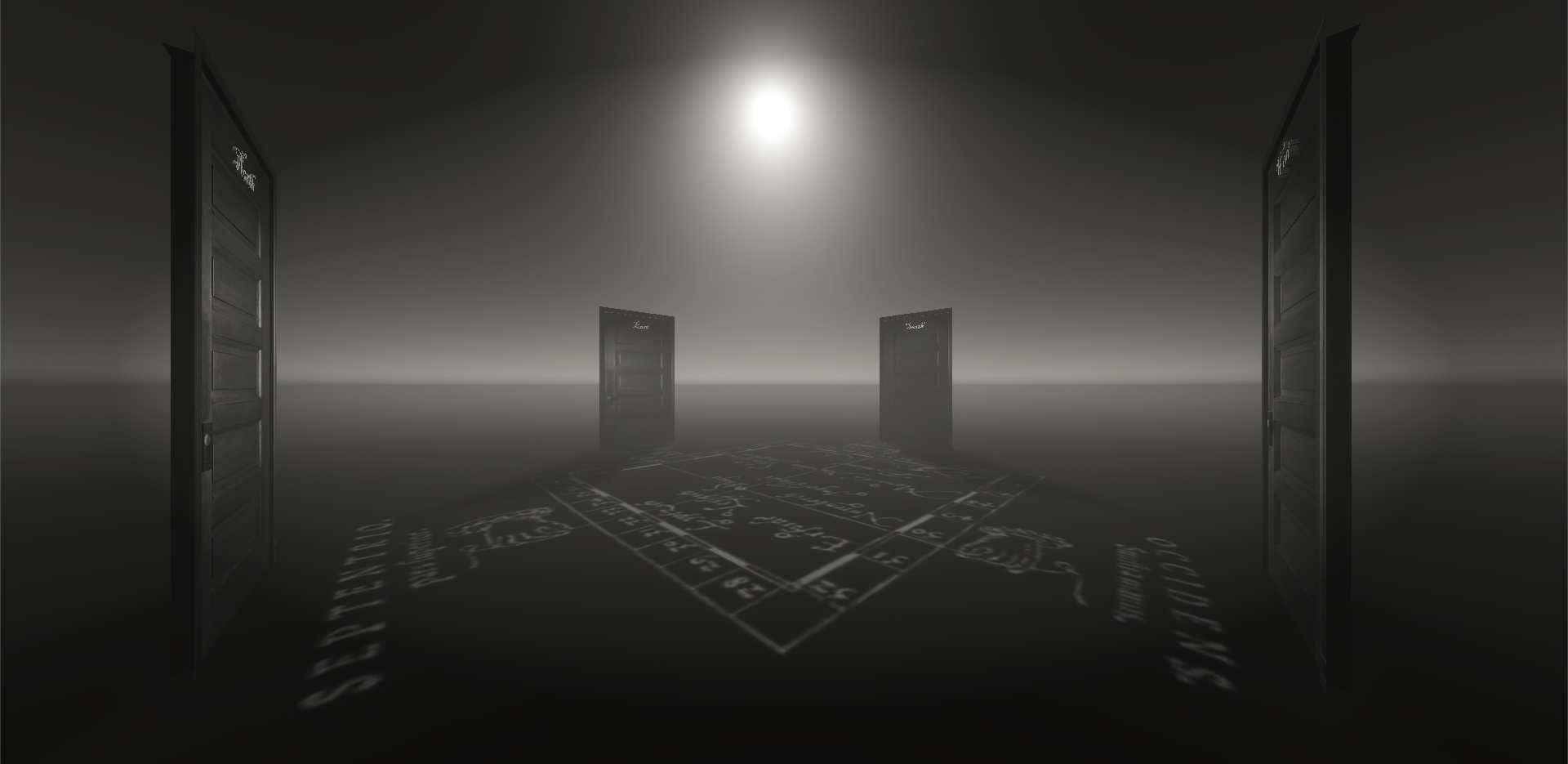|
"the Fold: episode I" still from VR experience for Oculus Rift & HTC Vive |
"the Fold: episode I" is a non-linear interactive film and virtual reality-based experience involving rooms with doors containing a concept leading into other rooms with doors. Inspired by Jorge Luis Borges' short story 'The Garden of Forking Paths', this VR-based 'escape the room' project highlights the similarities and differences of technics as it relates to Western (episode I) and Eastern (episode II) philosophy including structuralist & surrealist literature, sentient bodies, metaphysics, mathematics, the virtual object, Buddhism, Zen principles, Qi (氣), and problematizes the affirmation of technics, its outputs and technologies as anthropologically universal within the frame of VR, AI, 3D animation, and video games. |
To date, the project involves an array of these rooms: |
| episode I | episode II |
| the Doors | the Great Buddha |
| the Fold | the Rock Garden (T-shape) |
| the Grid | the Pocket Mazes |
| the Meridies | the Infinite Rock Garden |
| the Cave | the Shrine of Ascension |
| the Temple of Balancers | |
| liminal spaces | pinnacle encounters |
| Agent άλφα | Neolibus: late-capitalist monster |
| Agent Qi/氣 | Zhuangzi Butterflies |
| "A labyrinth is said, etymologically, to be multiple because it contains many folds. The multiple is not only what has many parts, but also what is folded in many ways" - Gilles Deleuze |
See below for details about each room for episode I: |
the Doors is the starting scene containing a door for each cardinal direction. A player can choose any of the four doors to start the experience.
the Fold is a room whose contents refer to the diagrams created in Bernard Cache's book 'Earth Moves'. Cache alludes to the idea of the fold and is a significant aspect to the embodiment of the virtual space as a navigable meandering path. The player starts with an initial third person virtual readymade protagonist. If the player falls off the path, the player starts over with a new protagonist. There are six protagonists which cycle through each instance including: the bottle rack, the bicycle wheel, the Utah teapot, the pawn, the urinal, and the pipe. the Grid is a room whose contents refer to elements within the book 'Godel, Escher, Bach' by Douglas Hofsteader. In it the idea of recursion is associated with various elements including Spanish Baroque architecture. Virtual readymade objects are also a significant aspect to this room. the Cave is a room whose contents refer to the allegory of the cave by Plato. Elements found in the Grid cast shadows within the cave conceptually linking Plato's allegory to the idea of the virtual readymade object. the Meridies is a room whose contents refer to the late 15th century diagram found in Edward Tufte's book 'The Visual Display of Information'. Here contents of Petrus Apianus' 1546 edition of 'Cosmographia' is spatialized as a mise en abyme exploiting the potential of the VR medium to display information in the Z-axis with a heightened sense of presence. |
